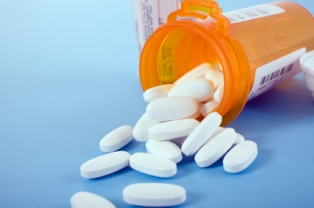Slowly but surely, like the proverbial aircraft carrier, the U.S. government is changing to a new and better course on the long-neglected issue of opioid abuse and addiction. On Tuesday, the Centers for Disease Control and Prevention took an emphatic stand against the loose prescribing norms that have fueled the growth of opioid consumption for non-cancer pain, with the terrible result that 16,000 people a year die from overdoses.
Labeling the drugs “dangerous,” and noting that evidence did not support their long-term efficacy for most cases of chronic pain, CDC Director Thomas Frieden urged physicians to follow more-cautious new CDC guidelines that emphasize alternative pain management techniques. Dr. Frieden and his colleagues deserve credit for incorporating a range of views in the guidelines while resisting pressure to weaken them from interest groups that support the status quo.
The CDC announcement followed Senate passage of the Comprehensive Addiction and Recovery Act of 2016 by a vote of 94 to 1. Whereas the White House this year called for more than $1 billion over two years in new mandatory funding for drug treatment, this bill includes no new funding beyond a previously allocated $400 million. Still, the legislation, co-sponsored by Sens. Rob Portman, R-Ohio, and Sheldon Whitehouse, D-R.I., is a step in the right direction – for three reasons.
First, it was bipartisan, and overwhelmingly so, suggesting that lawmakers can still work across the aisle on issues, such as public health, that should never be partisan in the first place.
Second, the bill addresses addiction to heroin and prescription opioids as a public-health issue rather than a law enforcement matter, a sea change in federal policy. Even without new money to back it up, this was a statement worth making.
Importantly, the bill authorizes grants to “medication-assisted” treatment programs based on substances such as methadone, buprenorphine and naltrexone, which reduce cravings for heroin and help stabilize patients as a prelude to weaning them completely. Controversial because of what critics call “substituting one addiction for another,” medication-assisted treatment has been shown in studies to work better than abstinence-only programs, and the bill wisely recognizes this.
Third, like the CDC guidelines, the bill attacks the supply side of the problem. It provides for $25 million in grants over five years to states that mandate provider participation in their computerized Prescription Drug Monitoring Programs. These programs help states track the flow of prescription opioids to prevent “doctor-shopping” by addicted patients. Despite federal aid through existing Justice Department grants, these programs remain underfunded and underenforced; the bill’s provisions should help a bit on both scores.
We repeat: The bill could be better. It omitted a proposal by Sens. Ed Markey, D-Mass., and Rand Paul, R-Ky., that would have deregulated the administration of treatment medications so that more doctors could treat more than 100 addicted patients a year, which is the current maximum.
Nevertheless, the legislation usefully reorients federal policy, thus setting the stage for more effective use of federal dollars when they become available, as they should and must. The House should take it up and pass it, soon.
Send questions/comments to the editors.



Success. Please wait for the page to reload. If the page does not reload within 5 seconds, please refresh the page.
Enter your email and password to access comments.
Hi, to comment on stories you must . This profile is in addition to your subscription and website login.
Already have a commenting profile? .
Invalid username/password.
Please check your email to confirm and complete your registration.
Only subscribers are eligible to post comments. Please subscribe or login first for digital access. Here’s why.
Use the form below to reset your password. When you've submitted your account email, we will send an email with a reset code.